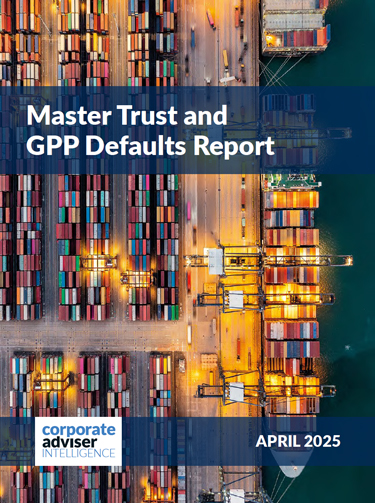The pensions dashboard connection countdown has now started. It is just a matter of weeks to the first staging date on 30 April. This starts an 18-month staging programme, where all in-scope schemes are required to be connected, covering the vast majority of workplace pensions.
As the start of this process nears, both regulators and the Pensions Dashboard Programme (PDP) say that are confident that the necessary connections will made on time.
Indeed, a number of providers are ahead of schedule, with three of the volunteer providers and schemes fully connected by early March.
Connection timetable
Connection dates depend on scheme size. As set out in Department for Work and Pensions guidance last year defined contribution master trusts schemes with 20,000 members and GPPs of 5,000 or more members are expected to connect to the dashboard system by 30 April.
By 30 November 2025, all large schemes and providers should be connected — this includes all master trusts, collective money purchase schemes, public service and parliamentary schemes, occupational pension schemes with 1,000 or more relevant members or FCA regulated schemes with 5,000 or more relevant members.
All medium-sized schemes and providers with between 100 and 999 relevant members and FCA regulated schemes with less than 4,999 relevant members will need to be connected by 30 September 2026. The final connection deadline for in-scope schemes is 31 October 2026.
That final date is mandatory, but the DWP has placed a series ‘have regards’ in relation to the guidance referencing TPR rules and the FCA handbook.
It has also strongly encouraged schemes to connect by the relevant dates unless there are “exceptional circumstances” which prevent them from doing so.
For anyone seeking insight into how things are progressing, both regulators, the Money and Pensions Service and the PDP all gave evidence to the Work and Pensions select committee, which held a session in Parliament on 5 March.
Essentially many of these key players remain positive, with the PDP even confirming that three volunteer providers out of 19 have already fully completed the connection process.
However, given the long dashboard process, previous delays and criticisms from public bodies and former ministers, the committees’ MPs were strongly focused on deadlines and delivery.
Altmann’s concerns
Indeed, the first question from committee chair Debbie Abrahams referred to the prospect of delays raised by Baroness Altmann. Altmann has been a critic for several years, but in February 2025 told The i Paper that she did not “expect a complete dashboard to be anywhere near ready next year” as only a “subset” of pension providers would be ready to provide the correct data adding that it would be “fiendishly difficult to deliver in practice”.
She continued: “Each provider often has different data standards and uses different IT systems both relative to other providers and also within the long-standing pension companies, past records are sometimes on legacy systems which do not have modern connectivity.”
Regulatory confidence
Pressed on deadlines, the FCA’s Nike Trost, head of asset management and pensions policy said: “We have about 150 firms that have about 30 million pots to connect. About half of those and 90 per cent of pots are starting to connect from the end of April, so in that early tranche. We are very confident that they are making good progress towards that
connection. Obviously, we have until October next year to discover any residual issues. But I think we think there’s very good progress being made.”
The committee also asked about the potential for schemes asking for deferrals. Lucy Stone, business lead, pensions dashboards, TPR, explained that schemes could submit deferral applications until last August, with decisions due shortly, but expressed confidence that the timeline would not be significantly impacted.
David Walmsley, the interim director of trusteeship, administration and DB Supervision at TPR said meetings, communi- cations and surveys of the sector also made him confident.
He added: “The vast majority are expected to connect, in line with the staging profile. There are very small numbers who won’t connect, but there are very good reasons for that, for example, a move to an insurer, and so they just won’t exist by October 2026 as a scheme. [Others] might not meet the staging profile, but they’ll expect to still meet the October 2026 deadline.”
Dashboard ready
Iain Patterson, senior responsible owner, at the PDP said: “Three of the 19 voluntary participants completed their full end to end testing and are fully connected to the architecture. It’s really positive news. We have a mixture of large organisations and ISPs that are kind of hoovering up some of the other organisations. They have over 90 per cent of the total population, so the vast amount will be connected.”
Pressed again, about the rest, Patterson noted that there were several stage gates including the encryption elements, but that all 19 were on the system in one form or another.
Kim Webb, programme director at the PDP, also noted that the regulators sit on the programme board, and there would be an opportunity to take quick action if there is deviation from the plans.
Webb was very strong on the rebuilding of the PDP team since various criticisms that accompanied past delays. Webb noted this had resulted in an improvement to their governance, which included incorporating more critical voices andanewcommercialrelationship. A strong, capable and resilient outlook underpinned their ongoing test and learn approach.
“We are confident that all providers and schemes will be connected. We are in good place,” she added.
Kim Gubler, chair of the Pensions Administration Standards Association (PASA) and an independent trustee on a master trust gave evidence in a more private-sector leaning session. She was also confident that connection deadline and terms would be met, though looking at the broader picture did see other challenges.
She said: “The majority of large private sector pension schemes are going to be connected by late spring. The experience is that these schemes have already done an awful lot of work to be ready to connect.
“The connection is the beginning of that journey. We’ve got all of the user testing that is going to start happening from the MoneyHelper dashboard and PDP probably from May or June.
“It will have to iterate because we won’t know until we see what behaviours it drives [among the public],whentheystartseeingreal data. Their data.”
She along with others did mention the matter of how people will react say to their estimated retirement income, which she felt was key.
Steve Darling MP was worried about slippages and the experts from the commercial side did admit that there were many challenges which would follow connection.
Maurice Titley, commercial director (Data and Dashboards), at Lumera said: “There is no central database that holds information about people and their pensions, so the way this works is that you have to have connection technology, that offers support when a saver uses a dashboard, which searches every place you might find a pension. They need to see all those pensions appear maybe from 10 different places and it needs to look like a dashboard, not a slowly chugging away comparison site that pulls them in one by one.
“This connection technology is. being created by an industry with Integrated Service Providers (ISP) where it is being provided on a commercial basis for lots of different schemes or some providers are connecting themselves. Progress is good. But there is a question about how it is all going to work. The way these have been designed is down to 20 individual parties doing this connection. In terms of readiness for 2026, these parties are testing the interface with the PDP team.”
He said there will be a need to make changes during the testing of the dashboard. “There is no doubt that data providers and connection technology providers are going to have to make changes. We will need to work in a collaborative way with the PDP to say what we think the changes should be and how they can be applied in a quick and efficient way in the next 18 months.”
European approach
Richard Smith, the volunteer independent chair of the Pensions Dashboard Operators Coalition, did have a warning.
“This doesn’t make me very happy to say this but every other country got the whole ecosystem working with a very narrow set of data with two or three pension providers. And then they got the whole vertical ecosystem working, got all the teething troubles sorted, including testing with real consumers. Then when they sorted all those problems, they broadened the data coverage. In the Netherlands’ case, they then mandated the data coverage across the whole industry. What we have done in this country is mandated the whole of the industry to connect from next month into an ecosystem that remains untested, with live consumers, with real data. That is a real problem, and I think that will remain a problem for testing.”
He echoed the opinion that most customers want to use a regulated dashboard from a company they frequently deal with, and saidin Norway commercial dashboards are used 30 times more than the state version.
“Most consumers want to use a regulated dashboard on an app they frequently use and trust, and we are nowhere near getting those regulated dashboards done.”
Brian Byrnes, head of public finance,atsavingsappMoneybox said: “We’re using an ISP, and that is relatively simple. The real key question then is what comes next in terms of when do consumers access the government website and then potentially commercial pensions dashboards going forward?”
Gubler added that she much preferred the term ‘private’ rather than ‘commercial’ for the next set of dashboards. She again noted uncertainty remains, with design standards for example still undefined.
She adds: “A lot of the organisations which would normally pith or be in build mode for these dashboards find it difficult to create the business case, to push this through. We’ve got the commitment from the PDP and the DWP has said that commercial dashboards, private sector dashboards, will happen, but we need to have more certainty so that those organisations that would build them, can.”





